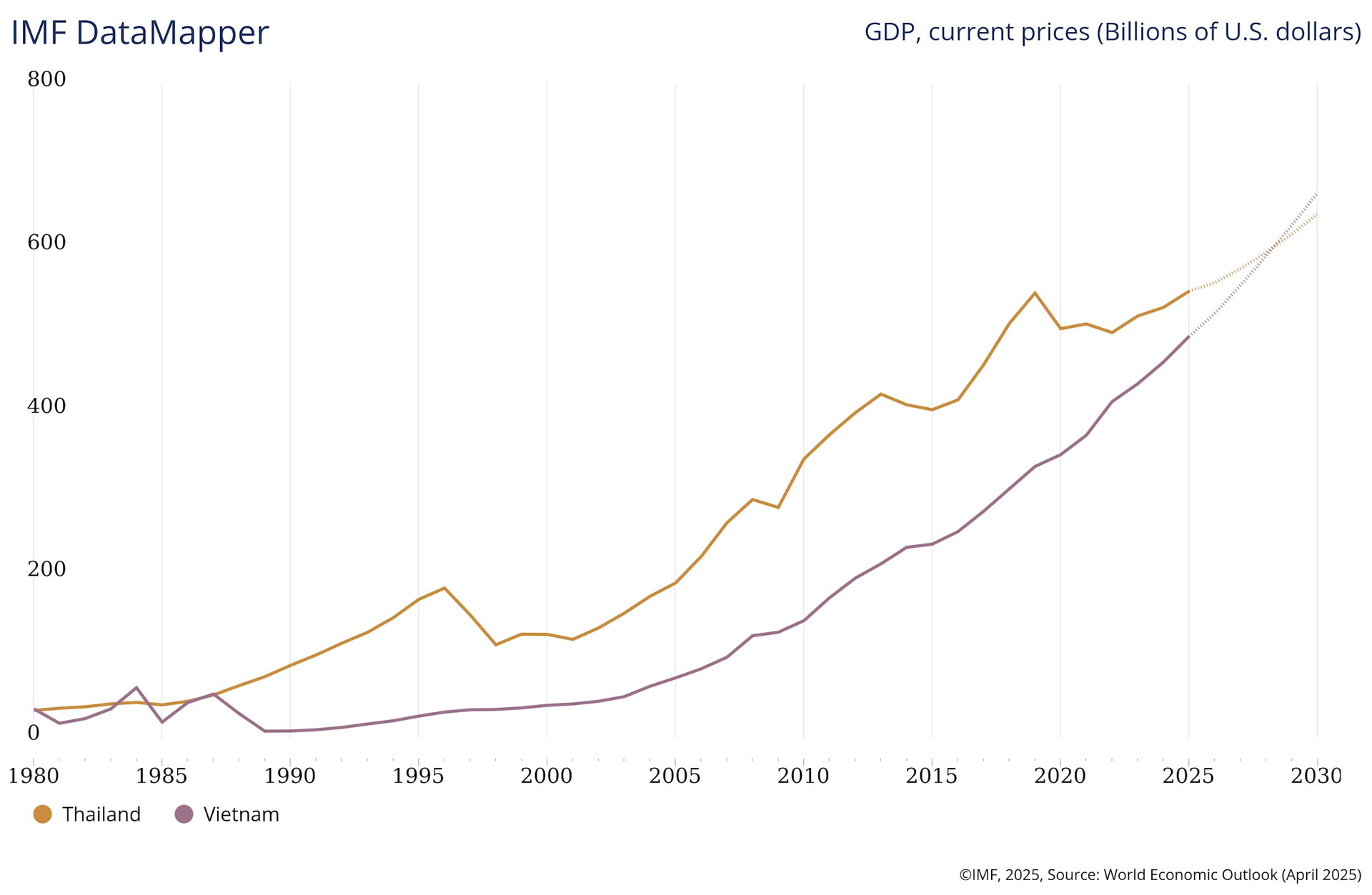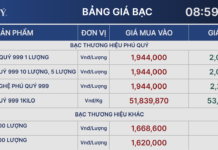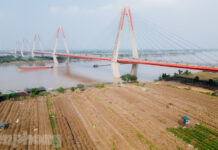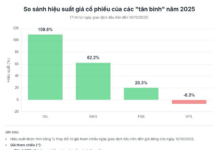According to data from the International Monetary Fund (IMF), Vietnam took 37 years to increase its GDP scale tenfold, reaching $400 billion from approximately $43 billion in 1986.
Specifically, Vietnam’s GDP in 1986 was recorded at $43 billion. By 2008, this figure had risen to $125 billion, three times higher than in 1986. Notably, it took Vietnam 23 years to first surpass the $100 billion economic milestone.
In the subsequent phase, Vietnam required only 15 years to grow its economy from $100 billion to $400 billion. By 2022, Vietnam’s GDP had reached $408 billion, and by 2024, it stood at $476 billion.
By 2025, Vietnam’s economy is projected to exceed $510 billion, ranking 32nd globally and 4th within ASEAN. IMF estimates suggest Vietnam’s economy will reach $491 billion in 2025, placing it 34th globally and 5th in ASEAN.
Will Vietnam’s economy surpass Thailand’s in just four years?
Notably, IMF experts forecast that by 2029, with a projected GDP of $666.5 billion, Vietnam will officially overtake Thailand (projected at $616 billion), becoming the fourth-largest economy in Southeast Asia and the 32nd largest globally, following Indonesia ($1.92 trillion), the Philippines ($695.3 billion), and Singapore ($525.22 billion).

IMF forecasts that by 2029, with a projected GDP of $666.5 billion, Vietnam will officially surpass Thailand, becoming the 32nd largest economy globally.
In an article published in the Bangkok Post in early October, Prime Minister Anutin Charnvirakul acknowledged at the annual Economic Reporters Association seminar that Thailand has fallen behind Vietnam, describing it as his worst nightmare. He noted that he never imagined Thailand’s growth would lag behind other Indochinese nations.
“We must collaborate, as this is within our capabilities. Previously, we were leaders. With our strong industrial, agricultural, and societal foundations, I am confident we can achieve new growth while maintaining Thailand’s economic strength,” he stated.
Before 1997, Thailand’s economy grew at an average of 7%, but this rate dropped to 3% post-1997. Since 2012, growth has averaged below 2%, primarily due to low investment. Pre-1997, investment accounted for 40% of GDP, but post-1997, this figure fell to just 23%.
Vietnam aims to join the top 30 global economies by 2030
At the First Congress of the Government Party Committee for the 2025-2030 term, the overarching goal was set to maintain a peaceful, stable environment; achieve rapid and sustainable economic development; and strive to become a modern industrialized, upper-middle-income developing nation by 2030, with a GDP ranking among the top 30 globally and 3rd within ASEAN.
According to Resolution No. 306/NQ-CP on the adjusted National Master Plan for the 2021-2030 period, with a vision to 2050, the economy aims for an average GDP growth rate of over 8.0%/year from 2021 to 2030. By 2030, per capita GDP is expected to reach approximately $8,500.
The service sector’s GDP share will exceed 50%, industry and construction will account for over 40%, and agriculture, forestry, and fisheries will contribute less than 10%. Labor productivity is expected to grow at around 7%/year from 2021 to 2030, with the 2026-2030 period surpassing 8.5%/year. Total Factor Productivity (TFP) will contribute over 55% to growth.
Leveraging the advantages of each socio-economic region, the focus will be on developing the Northern and Southern economic hubs, linked to the growth poles of Hanoi and Ho Chi Minh City. Key economic corridors include the North-South, Lao Cai-Hanoi-Hai Phong-Quang Ninh, and Moc Bai-Ho Chi Minh City-Bien Hoa-Vung Tau, featuring modern, synchronized infrastructure, high growth rates, and significant contributions to national development.
Digital infrastructure and data infrastructure will be robustly developed to support national digital transformation, digital government, digital economy, and digital society, with the digital economy targeting 30% of GDP.
A key task during this planning period is establishing a comprehensive national infrastructure framework, focusing on transportation, urban, rural, energy, digital, cultural, social, irrigation, environmental protection, disaster prevention, and climate change adaptation.
A new growth model will be established, driven by science, technology, innovation, and digital transformation. Priority will be given to sectors with high potential, advantages, and growth capacity, aligned with global trends and new development spaces.
National growth poles and dynamic regions will be developed to lead the nation’s progress. Select areas, cities, and regions with unique advantages will be transformed into economic, financial, and administrative-economic hubs with special, breakthrough policies and high international competitiveness. Appropriate mechanisms, policies, and resources will ensure social welfare and development in ethnic minority, mountainous, border, and island areas, contributing to political stability and national defense.
Economic corridors along the North-South axis, East-West corridors, and coastal economic belts will be developed, effectively connecting seaports, airports, international border gates, major trade hubs, cities, economic centers, and growth poles. These will integrate with regional and global economic corridors. Industrial-urban-service belts in dynamic regions and major cities will enhance regional connectivity and leverage new development spaces post-administrative restructuring.
Vietnam’s Q3 GDP Growth Hits Record High Since 2011: What Does This Mean for 2025’s First Nine Months?
The latest report from the General Statistics Office (Ministry of Finance) on the socio-economic situation highlights that Vietnam’s economy in the third quarter and the first nine months of 2025 has achieved remarkably positive results, with each month and quarter showing continuous improvement. This progress is particularly notable given the ongoing uncertainties in the global and regional economic landscape.
Vietnam Poised for 7% Annual Growth from 2026 to 2045, Says UOB’s Suan Teck Kin
In the period from 2026 to 2045, an average annual growth rate of approximately 7% is entirely achievable for Vietnam. This vision can become a reality if the current policies of reform and openness, coupled with robust investment and trade initiatives, continue to be vigorously promoted and effectively implemented.
“Profitable Growth: WinCommerce’s Fourth Consecutive Quarter of Success”
WinCommerce continues to thrive and profit for the fourth consecutive quarter, attributing its success to a strategic rural expansion. This proactive approach has allowed the company to stay ahead of the curve, catering to the evolving needs of modern consumers, particularly in underserved rural areas. This strategy has proven effective, as traditional channels struggle to keep up with changing consumer trends.
Accelerating New Store Openings, WinCommerce Profitable for the Fourth Consecutive Quarter
WinCommerce continues to thrive and profit for the fourth consecutive quarter, attributing its success to a robust expansion strategy targeting rural areas. By proactively embracing modern consumer trends and catering to the challenges faced by traditional channels, WinCommerce has effectively positioned itself at the forefront of the industry.
“Vietnam’s Economy Surges Past Expectations in 2024: On Track to Lead ASEAN in the Coming Year?”
In 2024, Vietnam’s GDP is estimated to grow by 7.09%. This projected growth showcases the country’s thriving economy and highlights its potential as an emerging market. With a population of over 90 million and a rapidly developing landscape, Vietnam presents a plethora of opportunities for businesses and investors alike. The country’s economic expansion opens doors for new ventures, trade partnerships, and innovative endeavors, making it a captivating prospect for those seeking lucrative opportunities in Asia.




































